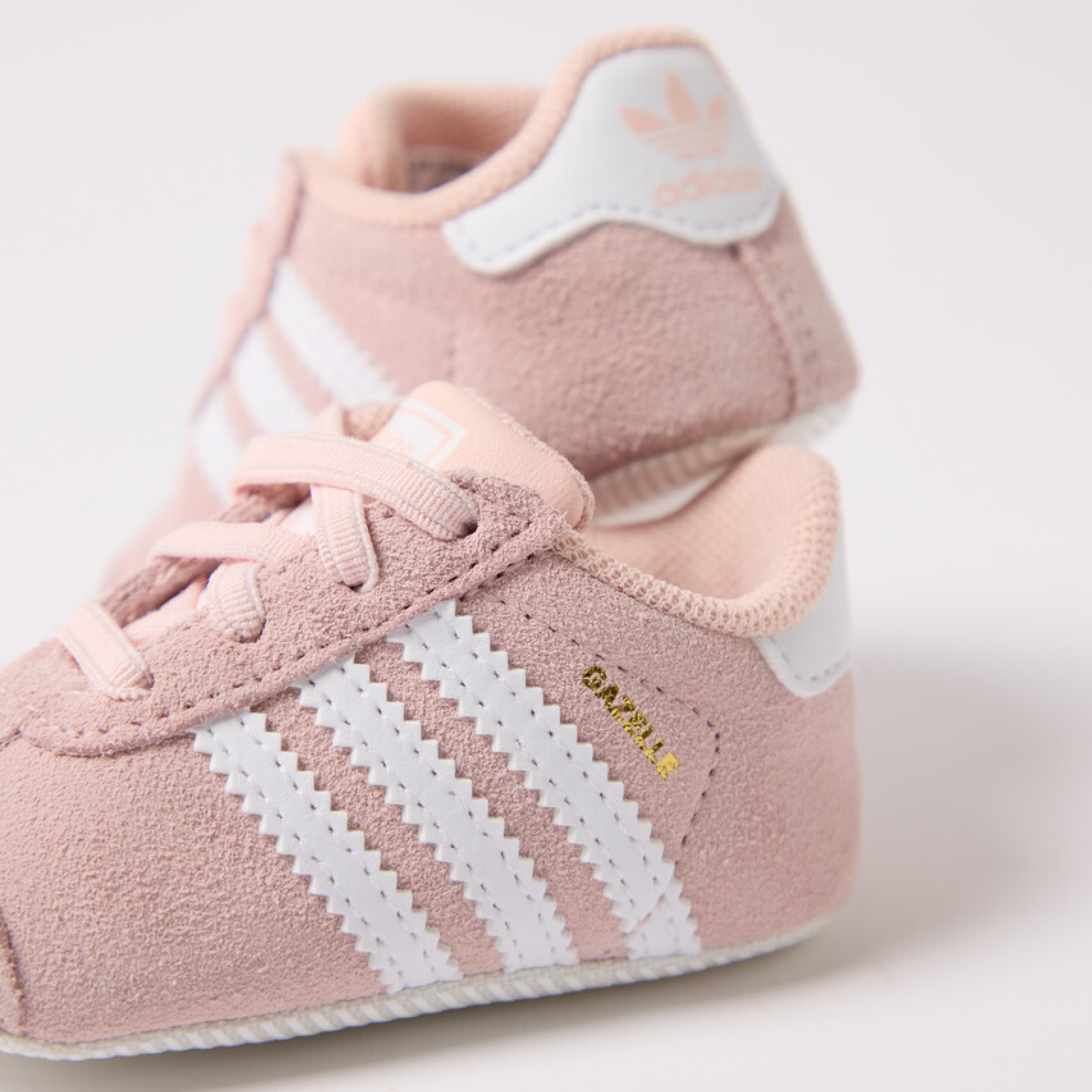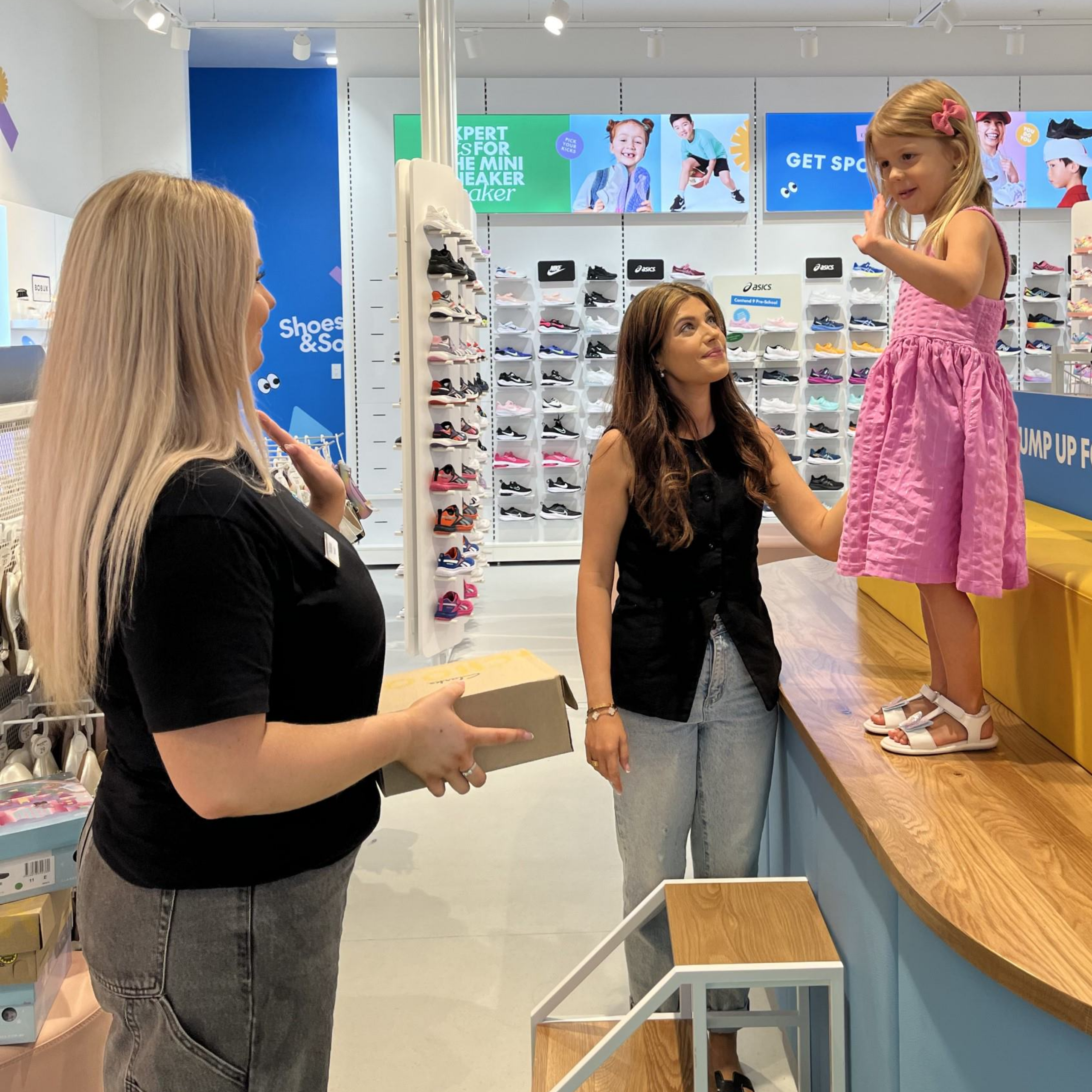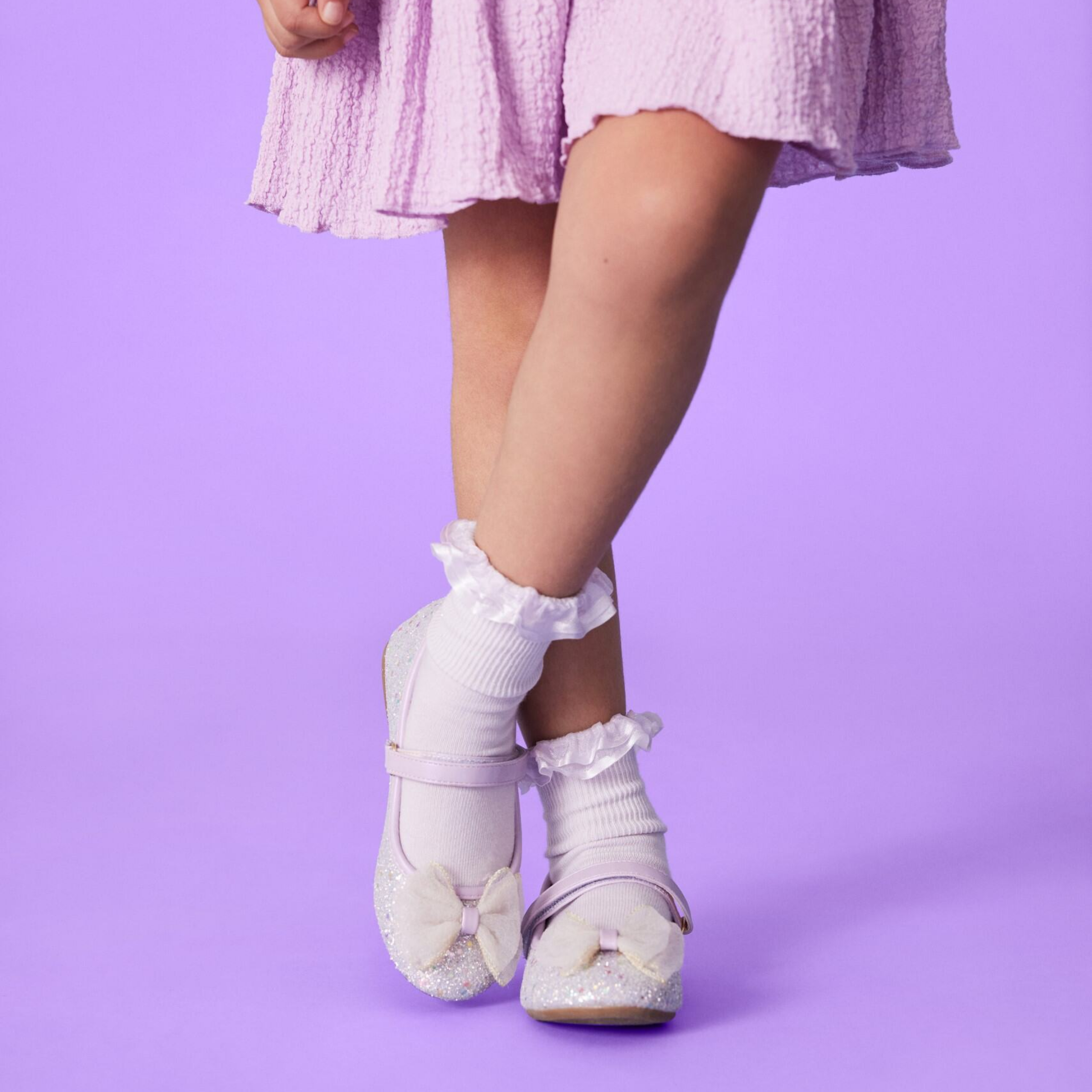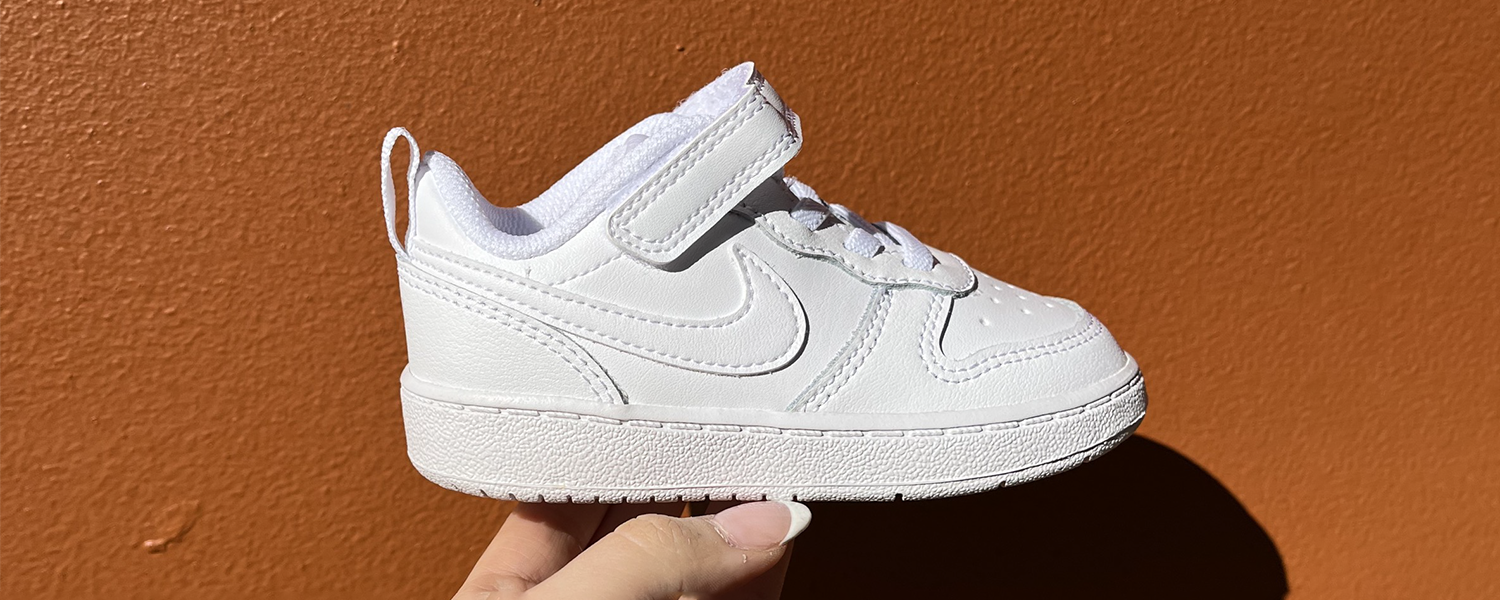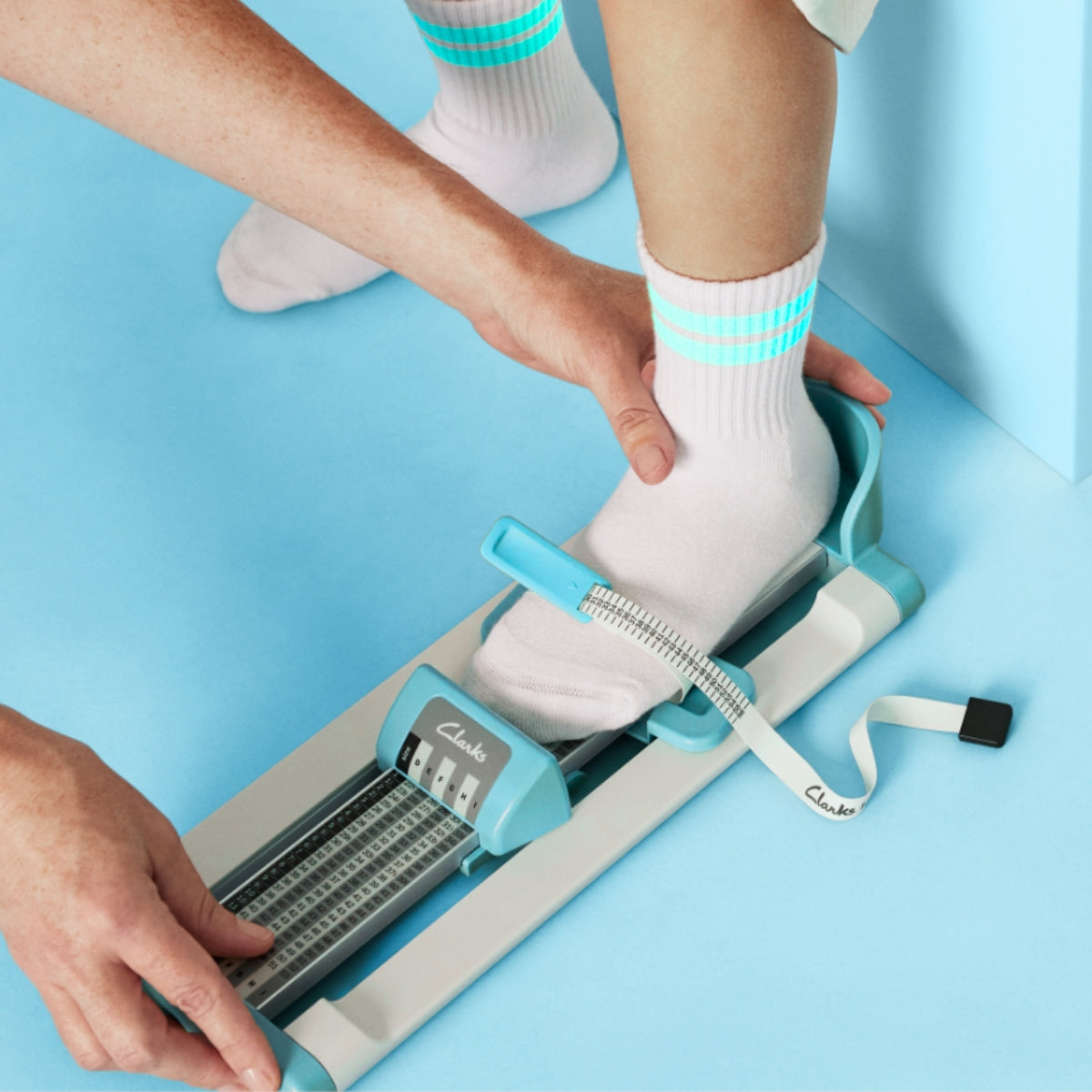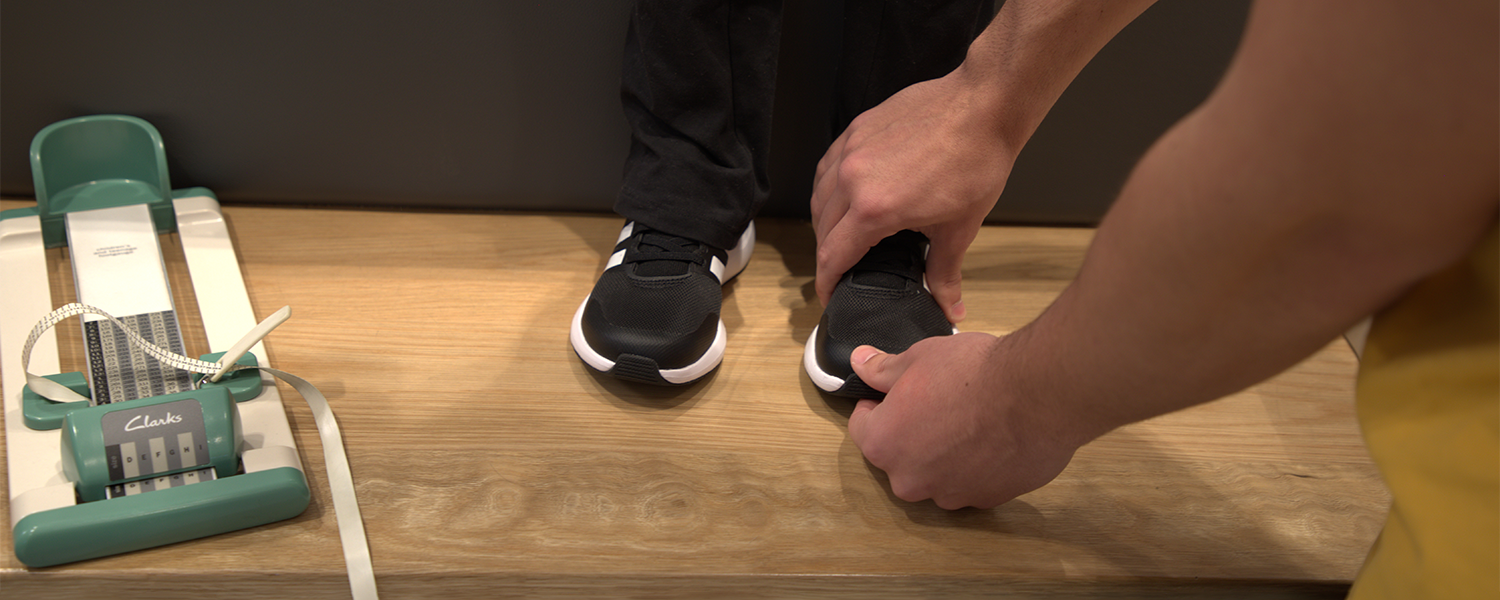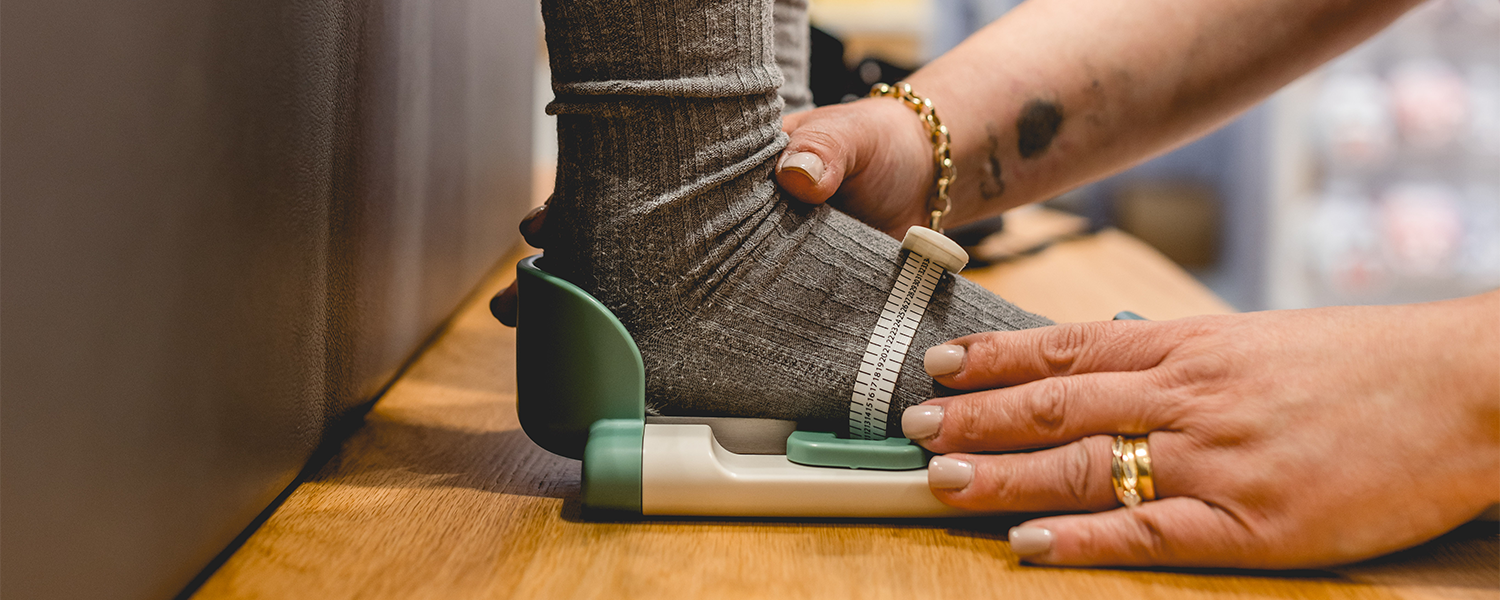
A Guide to Growing Feet
Feet change with each stage of life, from the first few months when their squishy little feet are mostly baby fat and tissue, to the rapid changes they undergo as they learn to stand and walk, putting increasing weight and pressure on their developing toots, says podiatrist Joseph Frenkel.
While going barefoot indoors is beneficial in the early years, a well fitted shoe is an important part of the proper ongoing health and development of their growing feet as they run, jump and play.
And if you’re feeling like they’re growing out of their shoes as soon as you’ve bought them, you’re not entirely wrong. In the first five years of life, a child’s feet grow rapidly. As a quick guide, you can expect them to grow around:
• Under 15 months: half a size about every two months;
• From 15 months to two years: around half a size every two to three months;
• From two to three years: a half size every three to four months;
• From three to five years: half a size every four months.
Experts recommend checking fit every eight weeks (or at the sight of a grimace or complaint when putting them on) just to be sure.
3-6 Months
Soft and squish-able, your baby’s foot is made up of cartilage-like tissue that will eventually ossify into bone. Gaps between these tissues make their feet easily (and painlessly) bendable.
At this stage, steer clear of tight or rigid shoes or socks that can force their tiny toots into unnatural positions. Look for shoes with flexible soles and interiors that won’t rub or irritate their tender skin.
6-9 Months
Many babies start to walk during this time, and as they start to put weight on their feet, the tissue will begin to harden into bone. This is a critical stage in foot development, and the right shoe becomes ever more important - ill-formed feet can increase the likelihood of stress and overuse injuries; think plantar fasciitis and bunions.
This is a great stage to get into the habit of having their feet professionally fitted to ensure the right fit. As they’ll be mastering walking on a range of surface, good grip on the sole is also important. Look for lighter weight shoes for added comfort.
9-18 Months
This is a big time for bone development, with each foot housing 25 continually-growing bones. Don’t panic about flat feet at this age, as the arches can take until five years of age to start developing.
It’s also a time of rapid growth, so keep a close eye on the fit of your toddlers shoes and have them refitted with each new pair (they may go through a couple of sizes per year from here.) Also stick to a sturdy sole with good grip as they embrace their adventurous, active selves!
2-4 Years Of Age
As the navicular bone (this runs along the shoe lace line) ossifies and the baby fat in their feet disappears, your little one’s feet will begin to resemble an adult foot. The bone count is now up to 45 in each foot, many of which will fuse in their teen years.
It’s still not quite time to worry about arch support, but soles should provide flexibility across the front, and sturdy at the back.
4 Years & Over
From the ages of four through to seven or eight – though this can extend as late as 10 years of age, the small muscles continue to develop, and ligaments and bones become solid, forming the arch. At this stage, arch support clearly becomes important, as does keeping an eye on the size and fit. Some children’s feet may be broader than others, while some can have a slimmer than average width, so fitting remains important to ensure the correct fit.
“Sometimes a cue for a change is your child complaining of foot pain. As a general guide a pair of shoes that are worn two to seven days a week will need replacing every four to nine months - so have a regular look at your kid’s shoes - if they look worn out, throw them out!” Joseph says.
The Teen Years
Children tend to grow in bursts and amazingly feet often finish growing before the rest of the body.
“Typically kids feet tend to stop growing around age 13 to 16 – which is great news for parents with teens, who sometimes have to change their kids shoes every three months,” Joseph says. He says summer and school holidays are often the time for the most growth in part due to increase in vitamin D exposure and less stress. That means the best time to buy new shoes for the school year is as close to the start of school as possible.
Feet continue to do a lot of the heavy lifting over our lifetime, bearing the brunt of every day activity. Ensure the best fit and the right type of shoe for the occasion from the very beginning sets your children’s feet up for the best beginning.







